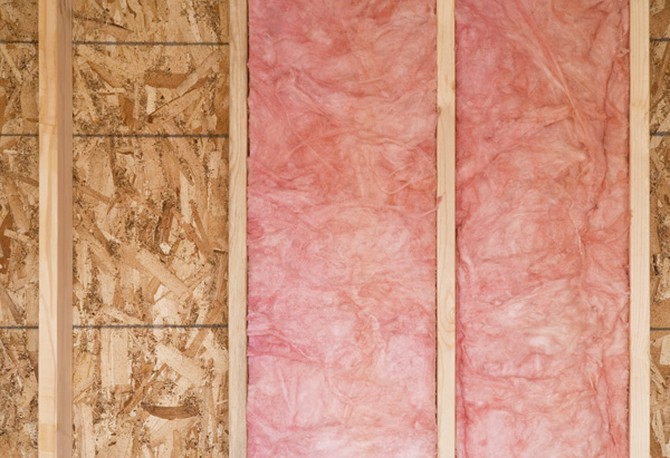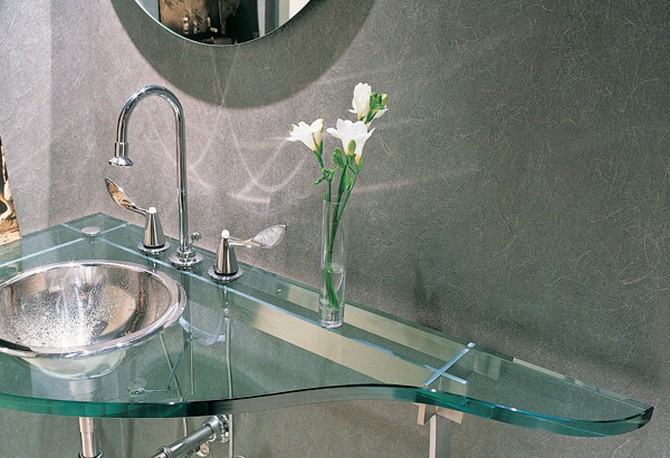5 Mistakes Every Homeowner Makes
The Money Pit co-host Tom Kraeutler explains what every DIYer should not do.
By Tom Kraeutler

Photo: iStockphoto/Thinkstock
Over the years, I've been asked hundreds of home improvement questions. While many of them start with "How can I do this?," a number of them start with "How do I un-do this?" That's because do-it-yourselfers embarking on projects for the first time tend to make the same basic mistakes. The good news is that most are easy to avoid. Here's how.
Mistake #1: Painting Before Prepping
Paint offers one of the easiest and least expensive ways to transform a space. It seems so easy, right? Pick a color, open the can, dunk in a brush and you’re good to go. This is why homeowners often skip the prep work.
Mistake #1: Painting Before Prepping
Paint offers one of the easiest and least expensive ways to transform a space. It seems so easy, right? Pick a color, open the can, dunk in a brush and you’re good to go. This is why homeowners often skip the prep work.

Photo: Comstock/Thinkstock
Mistake #2: Planting Without a Plan
I recently stopped by my local garden center to pick up seedlings, and I was reminded of another common mistake—one even I’ve made—which is choosing the wrong plants for the space. Wandering past row after row of bright and blooming plants, it’s easy to fill your cart with pots and pots, only to get home and find you need to squeeze your favorite sun-loving flowers into a shady spot or you've invested in a perennial that will outgrow its designated space before it’s fully matured.
So, before you pick up even one daylily, write down the sun and shade patterns in your yard, measure available planting spaces and make a list of the flowers you like. At the garden store, look at the nursery labels, which detail how much light and water the plant needs (this will tell you where the plant can go in your garden), as well as how big it will grow (to help you figure out how many will fit in the space you have).
So, before you pick up even one daylily, write down the sun and shade patterns in your yard, measure available planting spaces and make a list of the flowers you like. At the garden store, look at the nursery labels, which detail how much light and water the plant needs (this will tell you where the plant can go in your garden), as well as how big it will grow (to help you figure out how many will fit in the space you have).

Photo: iStockphoto/Thinkstock
Mistake #3: Under-Insulating
I hear from a lot of green-loving homeowners about their big plans: They talk about wind turbines, solar panels, geothermal wells, hybrid home appliances. While there's no reason not to dream of drilling 300 feet down in the front yard, it's just as important to make sure you have the basics covered, especially adequate insulation. Standards have changed over time, which means most homes don't have nearly enough. The right amount of insulation can lower your heating and cooling bills by 20 percent (not to mention it's easier and cheaper to install than your average wind turbine).
Your attic should have between 19 and 22 inches of blown-in or batt insulation. If you're nervous about working with yards and yards of the itchy pink rolls, look for poly-encapsulated products. These are encased in a layer of plastic to reduce exposure to fiberglass particles. Also, the weave of the fiberglass is longer and more cotton-like, leaving fewer particles to escape into the air to become a respiratory irritant.
Your attic should have between 19 and 22 inches of blown-in or batt insulation. If you're nervous about working with yards and yards of the itchy pink rolls, look for poly-encapsulated products. These are encased in a layer of plastic to reduce exposure to fiberglass particles. Also, the weave of the fiberglass is longer and more cotton-like, leaving fewer particles to escape into the air to become a respiratory irritant.

Photo: Digital Vision/Thinkstock
Mistake #4: Calling In a Contractor Too Quickly
Even the most intrepid and experienced do-it-yourselfers come up against a project that’s beyond their skills—for example, kitchen updates or electrical work—and so they turn to a professional. The trouble is, many homeowners think that’s the first step in a midsize project. There’s actually a lot you need to do before you make that call. Take a bathroom rehab: You will need to know the cabinetry, tile, fixtures and finishes you want, as well as their placement. If you haven’t made these decisions before you start calling contractors, you’re in for a pricing process based on what they think you want rather than what you actually expect.
Set yourself up for a smoother, more satisfying experience by coming up with your own specs: a list of your ideas and product choices for each. If you give this sheet to each of the contractors you interview, you’ll then be able to do an apples-to-apples bid comparison. By investing some thought and preparation at the beginning, you’ll get the best prices on home improvements in the end.
Set yourself up for a smoother, more satisfying experience by coming up with your own specs: a list of your ideas and product choices for each. If you give this sheet to each of the contractors you interview, you’ll then be able to do an apples-to-apples bid comparison. By investing some thought and preparation at the beginning, you’ll get the best prices on home improvements in the end.

Photo: Creatas/Thinkstock
Mistake #5: Getting Too Personal
Your home is a reflection of your tastes, your values and your lifestyle choices—but keep in mind that if you want to sell this careful reflection of yourself, the more unique your choices, the more they might impact your home’s value.
Several years ago I was asked to inspect a home built by a Rutgers University professor. He loved the place, had clearly designed it with care and couldn’t figure out why it was sitting on the market. The answer was crystal clear: He’d built the home in as a geodesic dome. As a gifted academic, he likely found the bulbous layout to be inspiring; the average homebuyer, on the other hand, found it hard to imagine where the couch would go.
We’ve learned a lot from relocation companies: Their experts are brought in to sell homes quickly, and the very first thing they do is paint everything eggshell white and put down neutral carpets. This isn’t to say you should live in a house of taupe, but you should consider your home improvement decisions—especially large ones that can’t easily be undone—with care. Choose things that will make you happy while you’re living in the house and that will appeal to future buyers who may not have your fantastic taste.
More Home Improvement Advice
Nate Berkus, Ty Pennington and more share their know-how
11 ways to refresh your home this weekend
Reasons to incorporate DIY into your life
Several years ago I was asked to inspect a home built by a Rutgers University professor. He loved the place, had clearly designed it with care and couldn’t figure out why it was sitting on the market. The answer was crystal clear: He’d built the home in as a geodesic dome. As a gifted academic, he likely found the bulbous layout to be inspiring; the average homebuyer, on the other hand, found it hard to imagine where the couch would go.
We’ve learned a lot from relocation companies: Their experts are brought in to sell homes quickly, and the very first thing they do is paint everything eggshell white and put down neutral carpets. This isn’t to say you should live in a house of taupe, but you should consider your home improvement decisions—especially large ones that can’t easily be undone—with care. Choose things that will make you happy while you’re living in the house and that will appeal to future buyers who may not have your fantastic taste.
More Home Improvement Advice
Nate Berkus, Ty Pennington and more share their know-how
11 ways to refresh your home this weekend
Reasons to incorporate DIY into your life
Published 05/16/2011

